Screams from the yard
Scroll down to continueA sign posted near an oil and gas industry facility in southeastern Saskatchewan warns workers and passersby of their proximity to toxic H2S. Footage courtesy of Global News
This investigation is the first chapter in an unprecedented series investigating the power and influence of the oil and gas industry, and its impacts on Canadian communities.
It was carried out over the course of a year by National Observer, the Toronto Star, Global News, and journalism schools at the universities of Concordia, Regina, Ryerson and British Columbia, with support from The Michener Awards Foundation and the Corporate Mapping Project. A complete list of credits follows the story.
Read the second chapter here, and watch the televised investigation on Global National.
Story by Elizabeth McSheffrey, Mike De Souza, Robert Cribb, Patti Sonntag and P.W. Elliott
There’s something deadly lurking in the rolling hills, pastures and valleys of Saskatchewan.
It can be an insidious killer. Invisible to the human eye, at high concentrations it can bring death within seconds as its victims suffer from respiratory paralysis.
To date, it has claimed the life of one unsuspecting oilpatch worker, a father of two, while debilitating several others who were fortunate enough to survive an encounter.
Its name? Hydrogen sulfide, H2S, also known as sour gas.
Leaked from the wellheads, pump jacks, pipes, tanks and flare stacks of the oilfields, it’s the colourless, corrosive and highly toxic substance that left Shirley Galloway’s relative sick on contact.
In October 2012, the teenager drove through a toxic plume of sour gas outside the Galloway home in southeastern Saskatchewan. Alerted by screams, Galloway rushed into the yard, where she found the teen vomiting amid the telltale smell of rotten eggs, with an accelerated heart rate.
After pulling the youngster inside, Galloway, a registered nurse, grabbed an air monitor and held it outside the door. An alarm sounded. The reading — more than 100 parts per million — detected a concentration of H2S that is immediately dangerous to human health.
Nauseous and ill, the teen missed school for three days, but eventually made a full recovery. Not all sour gas victims are so lucky.
An unprecedented joint national investigation, led in part by National Observer, now reveals that this close call catalyzed deep concern within the oilpatch and Saskatchewan government about the potentially deadly sour gas wafting over the province’s rural communities.
Internal meeting minutes obtained by the investigation detail repeated and ongoing findings of a “big failure in performance” by oil and gas companies in Saskatchewan, including “serious infractions,” a string of failed safety audits, and H2S readings that exceeded air quality standards “on a daily basis.”
Hundreds of documents, unearthed for the first time through access to information legislation and whistleblowers, further show that both industry — and government — knew about the danger for years.
The government claims it took action to curtail the problem, but two years after Galloway’s family member stood gasping for breath in the yard, someone died. In the months that followed, more were sickened.
Saskatchewan's petroleum sector dates back to the 1930s, and the province has become one of the largest oil and gas producers in North America.
Today, industry workers and residents living in the shadow of the oil and gas industry still complain of adverse health impacts. But regulatory standards remain largely unchanged and the details about H2S and other risks remain hidden.
Industry's damage control plan
Scroll down to continueA pump jack bobs up and down in southeastern Saskatchewan in September 2017. Footage courtesy of Global News
The head office of the Canadian Association of Petroleum Producers (CAPP) is on the 21st floor of a towering building in downtown Calgary. Nestled between skyscrapers, bus lanes and footbridges, it has a somewhat austere feel to it.
CAPP is the oil and gas industry’s most powerful organization, representing more than 90 producers operating in Canada. In December 2012 — two months after the Galloways’ terrifying brush with sour gas — Brad Herald, CAPP’s operations manager at the time, sent a concerned memo to his colleagues.
Responding to the Galloway incident, the Saskatchewan government had conducted 11 random audits of oil and gas facilities, many belonging to members of CAPP or the Small Explorers and Producers Association of Canada. All eleven facilities failed “with serious infractions.”
“Facilities in the area are venting H2S concentrations that may be exceeding 150,000 ppm,” Herald wrote to CAPP’s board of governors. That’s 150 times the amount that would cause instant death.
Herald suggested “inadequate operations and training” may have been the cause of “fugitive emissions,” and acknowledged that stricter regulation and compliance within CAPP’s membership was “imperative.”
But the potential public image damage from failed audits and their associated health risks also unsettled him. He made note of a petition circulating in Oxbow, Sask., and a new Facebook page dedicated to rising air quality concerns.
“This has the potential to become a broader industry reputation/social license concern and warrants immediate attention by operators in the region,” wrote Herald. “CAPP Communications is preparing key messages in the event that there is a media profile.”
This Sour Gas Chronology was circulated within Saskatchewan's Ministry of the Economy and provides a glimpse into the chronic compliance failures of the oil and gas industry throughout the province. Many of the infractions are related to toxic hydrogen sulfide. A redacted version of this document was obtained by the investigation. This is the first of six pages
Several industry and government insiders say two factions emerged within industry at that time. On one side, the larger established oil company representatives were horrified that shoddy equipment, poor installation and lack of training were rampant. On the other side were small oil producers who operate on tighter profit margins and wanted to treat the sour gas problem primarily through public relations efforts.
Soon after the memo was circulated, CAPP consulted a scientist on how to address the burgeoning H2S issue. In January 2013, records show the scientist pressed CAPP executives to take “urgent" action.
An expert on managing the risks of toxic substances, the scientist was disappointed to hear about the H2S problems, since they were easy to avoid. The scientist encouraged the industry lobby group to immediately develop and implement a code of practice for emissions controls, and to get ahead of the issue by condemning current practices in public and calling on the Saskatchewan government to ramp up inspections.
But CAPP didn’t create a new code of practice and there is no evidence that it followed the scientist's advice. In addition, there is no public record showing that it took steps to warn communities of any nearby danger at all.
Herald has since been promoted to vice-president of CAPP’s Western Canada operations.
An 'instruction letter' to industry
Five years later, in an interview from CAPP’s 21st floor headquarters, executive vice-president Terry Abel said the Galloway incident was the result of a safety failure. Sitting behind the desk of his white-walled office, he said any lack of safety compliance is “absolutely, totally unacceptable.”
“Facilities that were operating unsafely in Saskatchewan should not have been operating,” Abel explained. “The Saskatchewan government started doing a number of audits and there were indeed CAPP member facilities that weren’t following some of the rules... We initiated a process to start to work with the Saskatchewan government to better understand what was happening and look for opportunities to enhance the regulatory system.”
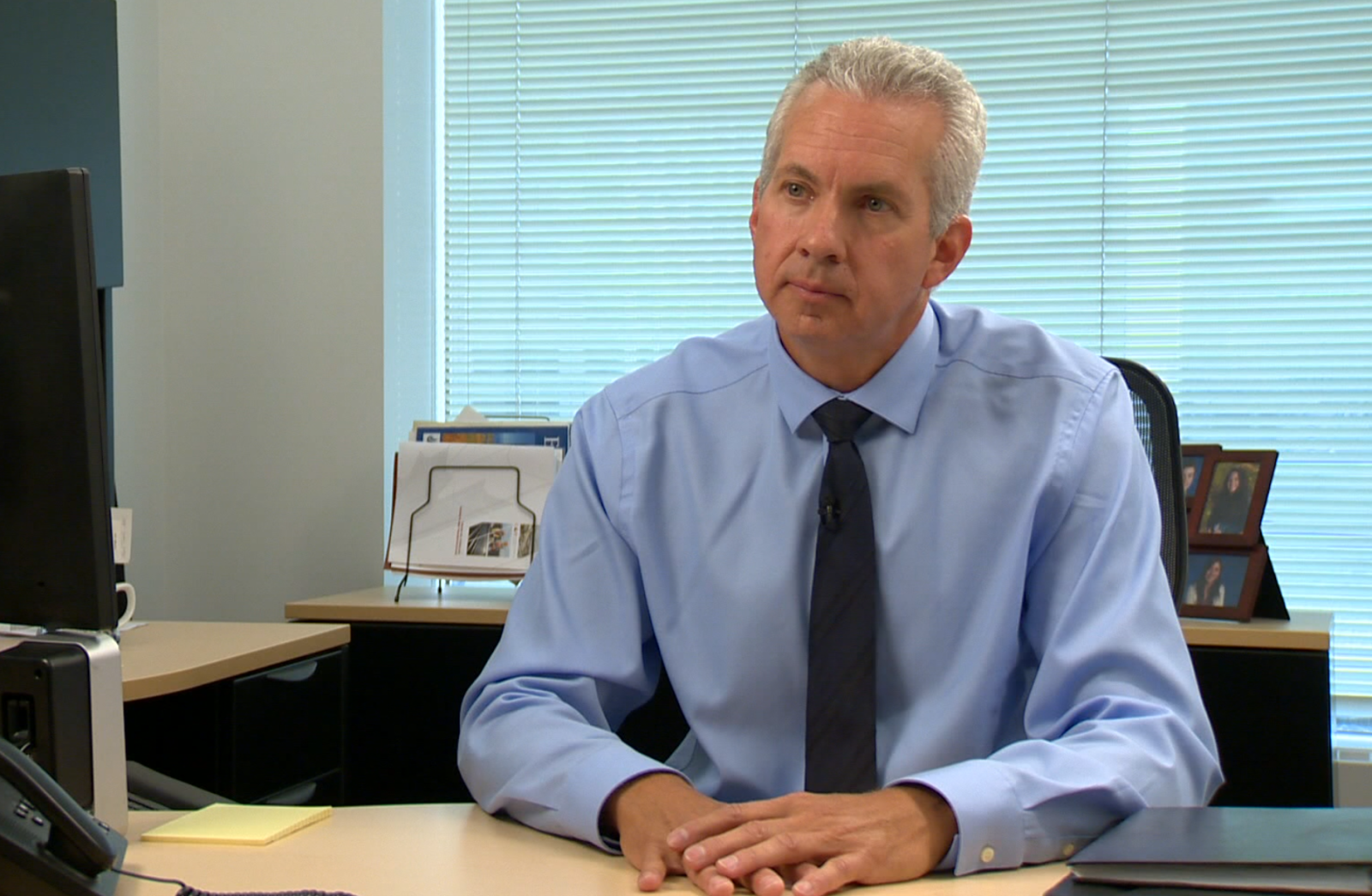
Two months after CAPP’s scientist advised immediate action, the province’s energy minister at the time, Tim McMillan, wrote an “instruction letter” to industry. He warned them of elevated H2S emissions at facilities and operations in southeastern Saskatchewan, and told them to meet “compliance obligations,” lest they face “escalated enforcement, penalty and/or prosecution.”
But no fines or prosecutions followed, and CAPP would later join another industry group to lobby against the use of fines as penalties for a number of regulatory infractions. McMillan now is the CEO and president of CAPP.
Enter the marketing specialist
McMillan was replaced as Saskatchewan’s energy minister in 2014 by Bill Boyd, a veteran politician with roots in the oil patch. Determined to press forward Premier Brad Wall's vision of Saskatchewan as an energy powerhouse, Boyd brought in recruitment and marketing specialist Laurie Pushor to serve as his right hand.
As Boyd stumped for industry growth, a June 2015 internal email revealed rising tension around the Ministry of the Economy's inspection mandate. The director of the petroleum development branch warned that the Estevan, Sask. field office had become so short-handed that it had “no field officers,” and a couple of summer students. He suggested that any “unnecessary tasks” assigned by the ministry could lead to sour gas inspection being “curtailed as we have no back up.”
The meetings continued, and one day after that email was sent, documents show that Boyd was scheduled to join Pushor for a discussion about “implementation” of Saskatchewan’s regulatory requirements with CAPP’s Saskatchewan Executive Policy Group in Calgary.
In August 2017, Saskatchewan Premier Brad Wall booted Boyd out of caucus for violating the province’s conflict of interest act. Boyd is currently charged with four environmental violations relating to alteration of Crown land near Eston, Sask. and is scheduled to appear in court later this month, CBC reports.
The allegations against Boyd have not been proven in court and Pushor remains in government as a deputy minister of the Saskatchewan Ministry of Economy.
The records 'do not exist'
Scroll down to continueA mix of gas containing H2S and other vapours leaks from a tank battery in Saskatchewan, captured through a Forward Looking Infrared Radiometre (FLIR). Footage obtained from the Ministry of the Economy's petroleum and natural gas division
At concentrations of 100 parts per million, H2S — oft labelled a 'silent killer’ in Canada’s oilpatch — causes olfactory nerve paralysis, so its victims can’t detect the gas’ trademark rotten egg smell.
Continued exposure at that level can bring death within 48 hours, and at concentrations at or above 1,000 parts per million, victims may die rapidly from respiratory paralysis or over days from an inflammatory reaction in the lungs.
The Galloway incident — which was reported but does not show up in the province's database — was at the threshold of being undetectable to the human nose. But the government issued no public warning after Galloway reported the plume at her home, because “there was no evidence that this was a widespread failure,” it said in a written statement.
In late 2012, around the time Galloway’s teenaged relative fell ill from exposure, Saskatchewan’s Ministry of the Economy was receiving one or two complaints about noxious sour gas odours each week, according to CAPP’s internal notes.
The investigative team tried to obtain 60 sour gas complaints sent to the provincial department over the years, but received a response that those records “do not exist” within the ministry. Searches for the data behind a map showing areas of the province where H2S risks are highest — referenced repeatedly in government documents between 2012 and 2015 — also produced a “no such data exists” response from the freedom of information office working with that department.
According to minutes from a meeting between government and industry on May 28, 2015, the Ministry of the Economy "prefers to see operators deal with public complaint without having to be involved.”
Residents who notice something amiss in the oilpatch are often encouraged by energy companies to call them directly, rather than notify the regulator — a practice that has made it difficult to trace records of many public complaints.
The Price of Oil investigation tried to obtain copies of 60 public complaints concerning hydrogen sulfide that a Saskatchewan Ministry of the Economy official publicly confirmed in a media report his department had received. Two years later, that same department failed to produce any records of those complaints
Sour gas spots 'should be' public
The true frequency of H2S incidents in Saskatchewan therefore remains a mystery.
“There’s an institutional reluctance to make this information public,” said a former staffer in the petroleum and natural gas division. “The public should be able to see all the information, including H2S gas locations, spill information and inspection reports. It’s a misguided understanding that it would embarrass somebody.”
Since 2012, ministry officials count one death and five other “documented incidents where a member of the public was exposed to unsafe levels of sour gas near a well or facility site.”
None of these incidents triggered a public statement by the government.
“There was no need for public notification since the incident was quickly dealt with at the site,” reads the statement from Saskatchewan's Ministry of the Economy.
But dozens of interviews over the past year show that H2S run-ins are far more common. They never make Saskatchewan’s official tally because they either go unreported or are not recorded properly.
Danger zones kept secret
Scroll down to continueA road sign warns against oilfield traffic in the Souris River valley south of Roche Percee, Sask. Photo by Mark Taylor for the Toronto Star
In April 2012 — six months before Galloway’s young relative was poisoned — the director for Saskatchewan’s petroleum and natural gas division showed a colourful map to a roomful of oil and gas companies and their customers in Calgary.
Dotted by red and orange, it showed precise “critical sour gas locations” in southeastern Saskatchewan, where oil had high H2S levels.
According to internal government records, such data was once available to Saskatchewan residents, but was pulled offline around 2009 when it was no longer up to date. Sources inside the Ministry of the Economy say that after the April 2012 presentation, some staffers pushed to have the hotspots made public, but their efforts were dismissed by senior government officials in the minister’s office.
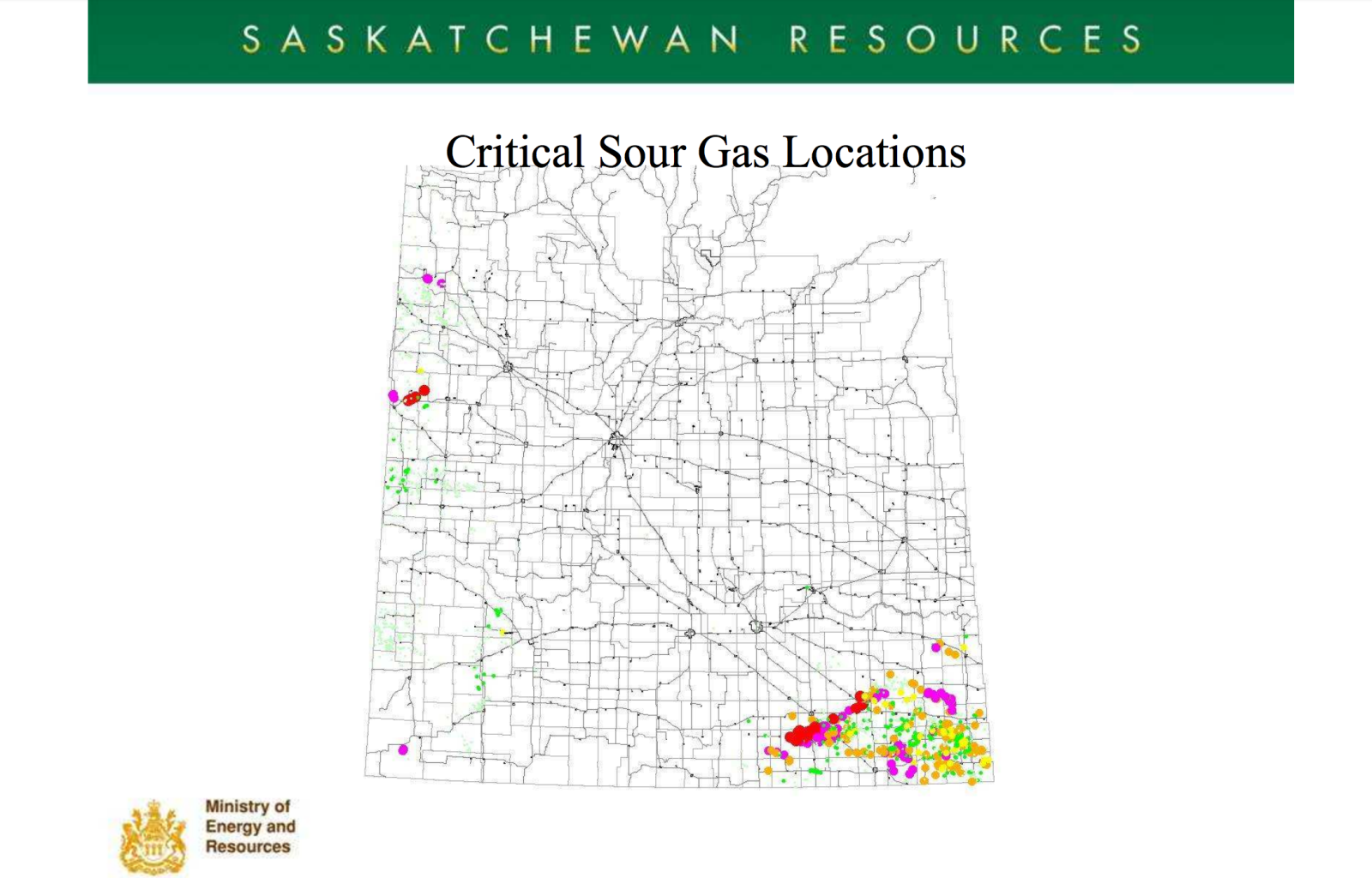
Over the next two years, an internal document shows that the ministry shut down at least 12 facilities due to H2S venting or related infractions. A second string of 22 oil and gas facilities failed to pass inspection, and the ministry documented several sour gas encounters linked to illness among nearby residents, industry workers and cattle.
Government officials met with CAPP and other industry groups four times between Oct. 30, 2012 and January 2014 about the H2S issue, and proposed an action plan that included measures like the development of a public communications document and a licensing regime for high-risk, single-well batteries.
Those plans were never adopted, the Ministry of the Economy confirmed.
“Instead, the Ministry chose to take a risked-based approach to managing the sour gas issue that included increased field inspections and improved data collection,” Deb Young, media relations manager for the department, told the investigation via email.
As part of that plan, eighteen wells that had been venting sour gas were ordered to be “shut-in” between 2012 and 2013. From 2013 to the summer of 2014, the ministry began implementing “an aggressive inspection and enforcement schedule to reduce sour gas emission,” that included suspension orders against 30 facilities owing to “H2S management issues,” the statement reads.
The increased inspections and oversight were funded, in part, by a new tax or cost-recovery levy tied to oil and gas wells, Young explained. This money from industry has allowed the province to expand its budget for regulatory programs by $4.5 million since the levy was introduced in 2014, she said.
Her department declined an interview request on camera.
“The Government of Saskatchewan already has extensive rules governing the safe operation of sour gas facilities and concluded that focused efforts on enforcing the existing rules should be pursued before new rules were put in place,” said Young.
Yet on April 7, 2014, as the H2S problem continued, the government spoke with industry again about publicly disclosing the colourful map of sour gas hotspots. Alberta does it, officials noted in meeting minutes taken amid heavy debate on H2S policy reform.
“Government may be accused of hiding information,” state the notes. “Are we creating a risk by not releasing this data immediately?”
Despite acknowledging “significant” public health risks from H2S, at least some officials at the meeting expressed concern about “sensitivity in this data (because) there are residents living in these areas.”
But for a second time, the Saskatchewan government opted to keep H2S danger zones a secret.
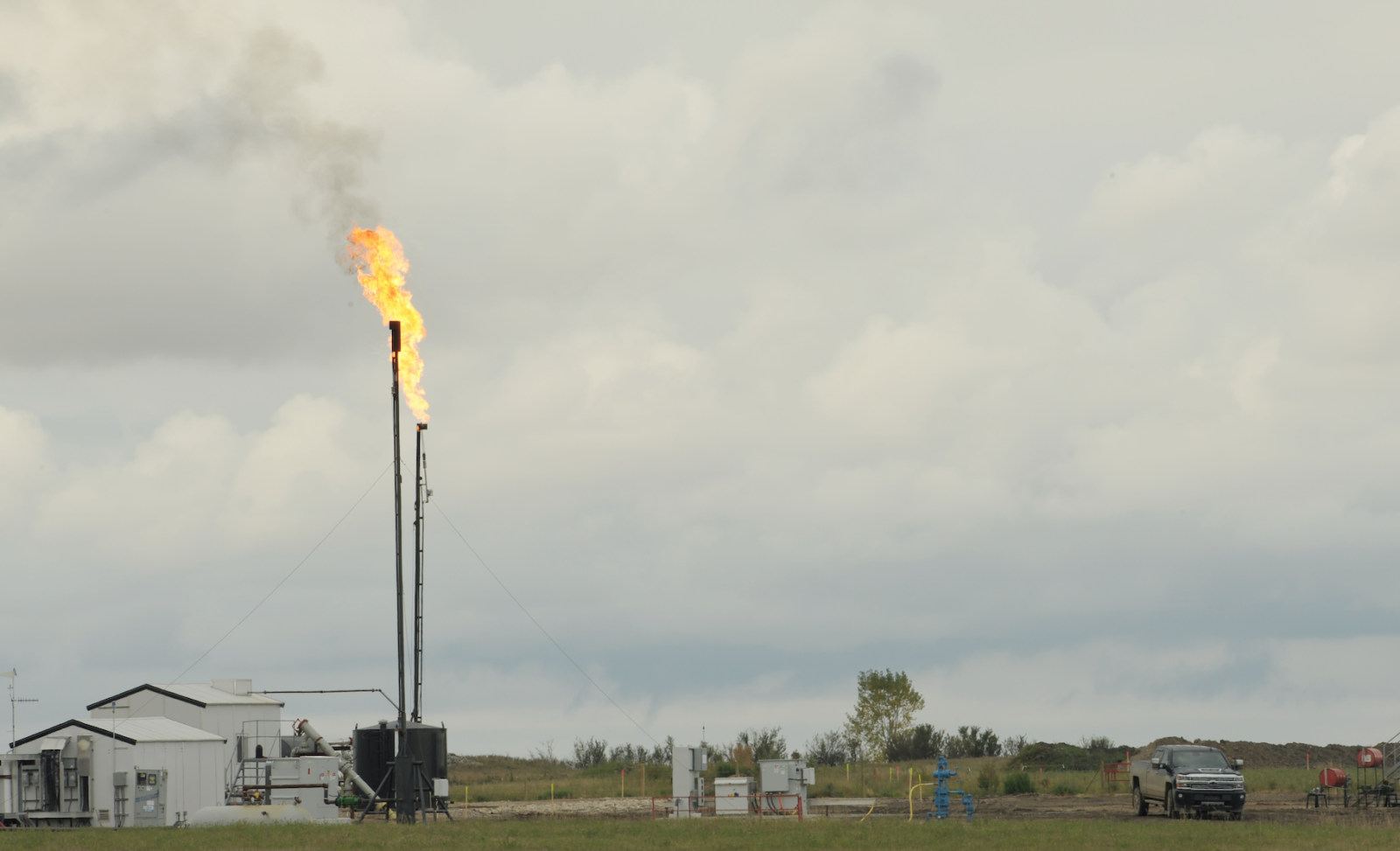
Industry fights back against fines
Three weeks later — after the government canned its first proposed sour gas action plan — it also declined to implement a tough new penalty regime for H2S emissions and related breaches. The decision came after two major industry groups wrote a letter on April 29, 2014 suggesting the proposed fines, reaching up to $1 million, were “not appropriate.”
The letter was sent to the ministry from CAPP and the Explorers and Producers Association of Canada (EPAC). It argued that some sour gas infractions “are unsuitable for enforcement by fine,” and that serious infractions should be handled by “abandonment or suspension” of facilities instead.
EPAC president Gary Leach, who signed the 2014 letter, declined requests for comment on this investigation. CAPP’s Terry Abel said the letter was not an attempt to take fines out of the equation, but to encourage the government to use a broad suite of penal options.
“We’re actually saying fines should be part of the tools that the regulator has at their disposal, and they should be applied appropriately,” he explained. “In some cases, fines alone — we didn’t believe were enough.”
Asked why CAPP did not support both fines and shut-down orders to ensure maximum compliance from industry on an urgent public health threat, Abel responded:
“I’m not aware that a combination of different tools was put in front of us. We were responding directly to some ideas around administrative fine penalties.”
The ministry insisted that it did not implement the fine regime because stepped up inspections, along with “enforcement of the existing regulations” were sufficient to address the risks posed by sour gas.
The next month, Michael Bunz, a 38-year-old father and oil industry salesman, was found in an industrial shack 80 kilometres from the Galloway house, dead from exposure to H2S.
Their son died 'for nothing'
Scroll down to continueDianne and Allan Bunz say that the oil and gas industry 'failed' to protect their son Michael, who died from H2S exposure on May 22, 2014. They are seen here in the home in Wawota, Sask. Photo by Mark Taylor for the Toronto Star
It’s a sight familiar to many Saskatchewan residents: bobbing black steel pump jacks, towering flare stacks spewing yellow flames, rotund batteries tainted red with signs of corrosion.
For thousands of families, Saskatchewan’s oil boom has brought unprecedented prosperity. For others, it has brought fear, illness and even death.
Dianne and Allan Bunz will never forget the sound of their daughter’s screams when they told her on the phone that her brother was dead.
“It was something — something you’ll never forget,” Allan recalled.
Michael Bunz, a chemical salesman, was testing samples between the towns Carlyle and Kipling on May 22, 2014, when a tank valve burst, spewing oil, water and H2S into his face. According to the coroner’s report, he would have experienced, "immediate loss of conscious and sudden death."
A large photo collage of him, pictured with friends, family and his two young daughters, is propped up on the wall of the living room in Dianne and Allan’s modest bungalow in Wawota, Sask.
“A strong man with a gentle heart,” reads the caption.
Staring back from a frame, Bunz is the picture of a hearty young father, a hockey and baseball player posed proudly with his children. Dianne’s lips tremble when she speaks about her only son. She wipes tears from beneath her bright blue glasses.
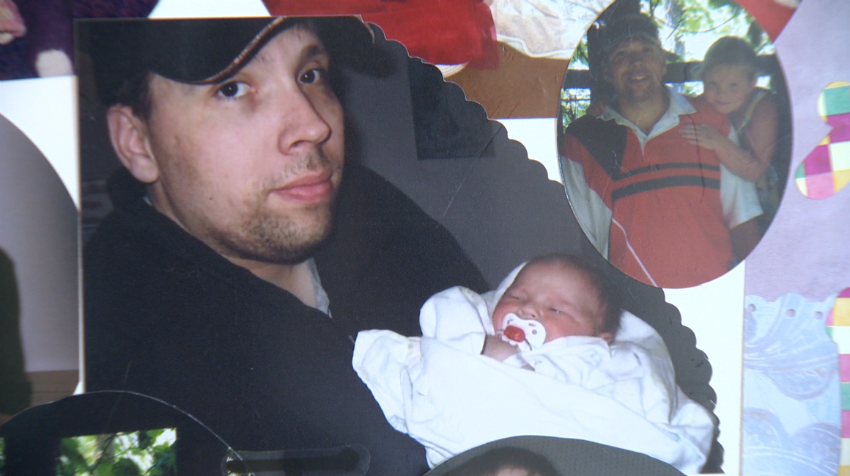
Death omitted from incident report
“He was a kind person, very quiet,” she said. “... He only lived three blocks away from us, and that’s the hard part. He is not here to look after us when we get older.”
Dianne and Allan visit their son’s grave site every week to cut the grass and be close to Michael, whose tombstone reads: “In loving memory of Emma and Olivia’s Daddy.”
It may be the only permanent, public marker of his death — a death that is not mentioned in the incident report filed to the provincial government by the company whose tank valve spewed the gas. “Spill occurred as a result of a failed valve,” the report states simply, omitting the most important fact: a human life was lost.
Dianne and Allan said were told by Nalco Champion, their son’s employer, that the concentration of H2S in the fluids at the site where he was killed was an estimated 40,000 parts per million — more than enough to bring death within seconds.
But the incident report lists the H2S emission at “0,” reflecting the difficulty of recording sudden bursts of gas, but leaving the impression that no such release occurred. The Ministry of the Economy did not issue any public warnings after his death.
Court documents show that Bunz did not have the standard proper safety equipment when he died; missing were a respirator and a backup worker — alleged violations of occupational health and safety standards.
Dianne believes her son’s death could have been prevented had proper training and equipment been provided. Crown prosecutors are now pursuing three charges against Nalco Champion under occupational health and safety legislation for failing to provide Bunz with a respirator and failing to ensure he entered a dangerous situation with a second worker.
A conviction would result in a fine.
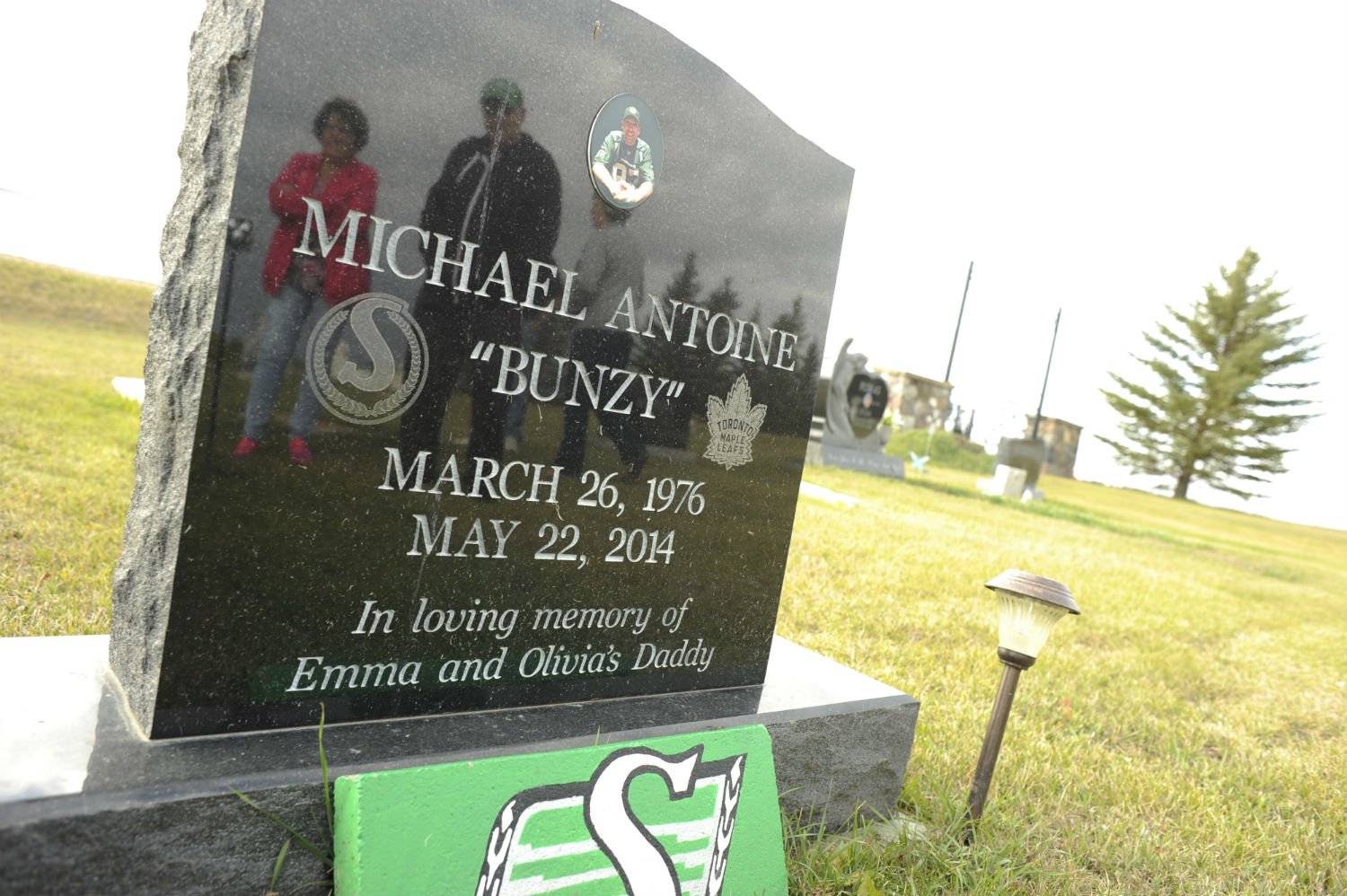
Company 'failed to protect my son'
“We remain deeply saddened by the loss of our colleague, Michael Bunz,” says a written statement from Nalco in response to the investigation. The company declined an on-camera interview.
“The safety of our associates, customers and communities is vitally important, and we remain committed to our robust safety policies, protocols and training programs, which include those related to hydrogen sulfide.”
CAPP’s Terry Abel added that Bunz’s death “breaks his heart,” and that industry strives for “no incidents whatsoever, even close calls.”
“It breaks my heart every time I hear about a death or a fatality or an injury,” he said. “We have this amazing culture of safety and we never want to see that stuff happen.”
Yet the day after Bunz was killed, Dianne told a counsellor sent by Nalco: “... The one thing I know is that the company failed to protect my son.”
His father Allan, who spent more than two decades working in the oil industry, agrees with her assessment. He predicted there will be more casualties from sour gas in the oilpatch.
“Unfortunately, I don’t suppose it’s over yet. It’s gonna happen some more,” he said.
After reviewing internal government and industry records obtained by the investigation, he added that the lack of regulatory changes made since the incident meant his son died “for nothing.”
“They’re worried about that almighty friggin’ dollar, that’s all they’re worried about. And it’s sad, so sad,” he said in a near whisper. “They are still worried about making it work for the company, not making it work for the person that’s working there."
From watchdog to partner
Scroll down to continueThe Government of Saskatchewan, led by outgoing Premier Brad Wall (above), has known about industry H2S infractions since 2012, but has not changed any of its regulatory standards. File photo by Alex Tétreault
Unlike its competitors in Alberta and British Columbia, the Saskatchewan government is the sole regulator of the oil and gas sector in the province.
There is no arm’s length, independent body charged with overseeing the lucrative industry, whose production in 2016 was worth $6.9 billion, providing more than half a billion dollars in provincial tax revenue.
Major changes to the industry’s oversight date back to 2012, the same year as the Galloway incident. The provincial government folded the Ministry of Energy and Resources into a new Ministry of the Economy — a ministry tasked with both regulating natural resource extraction and promoting economic development. It reports to the Saskatchewan ministers for the economy, and for energy and resources.
Some experts argue that this dual role is a conflict of interest, but the ministry disagrees.
“Within the Ministry of the Economy, the petroleum and natural gas division carries out industry regulation,” wrote the department’s spokeswoman, Young. “It is not involved in investment attraction, royalty and tax assessment and land sales. It is solely focused on well, facility and pipeline regulation.”
Two years after that shift, however, an internal government document warned of dramatic under-regulation in Saskatchewan. A provincial analysis found that B.C. had 53 operating wells per employee at its regulatory agency and Alberta had 181 wells per employee. At Saskatchewan's new Ministry of the Economy, there were a whopping 443 operating wells per employee.
Today, 27 full-time inspectors working in four field offices are charged with ensuring the province’s 126,000 wells are in compliance with provincial regulations – a total of 6,250 each. Added to this are an estimated 118,000 kilometres of pipelines and flowlines.
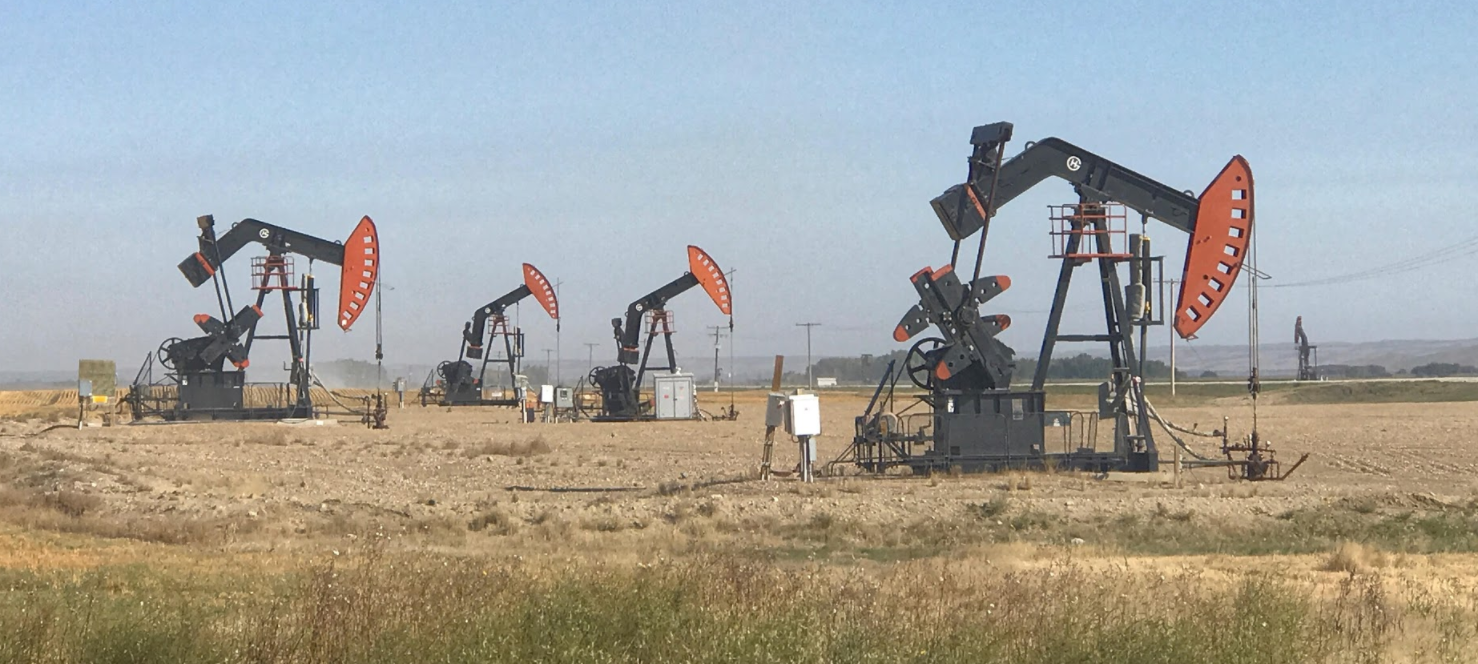
No fines in more than a decade
Despite the huge number of facilities to monitor, the ministry maintains it has “the necessary resources” to carry out its mandate and protect public safety. Between 2016 and 2017 it carried out more than 18,300 well, facility and pipeline inspections, it said.
In written response to questions last month, a spokesperson acknowledged that “high levels of sour gas associated with oil and gas production” in several oil pools in southeastern Saskatchewan triggered increased scrutiny, including more inspections and staff, new high-tech equipment for detecting emissions and a $69-million inspection reporting database (which is not accessible to the public).
Despite these additional resources, Doug MacKnight, current assistant deputy minister responsible for the ministry’s petroleum and natural gas division, said in an interview with a team of researchers in March that his department has not issued a single fine against any industry company for "well over a decade.”
Speaking to operators is usually all that’s needed to persuade them to meet legislated standards, he told the investigation.
“Generally, we don’t have to resort to that,” he said. “It’s usually just a notice to the operator to bring themselves into compliance.”
The Ministry of the Economy’s spokeswoman called the lack of fines, “indicative of the effectiveness of the other regulatory compliance tools.”
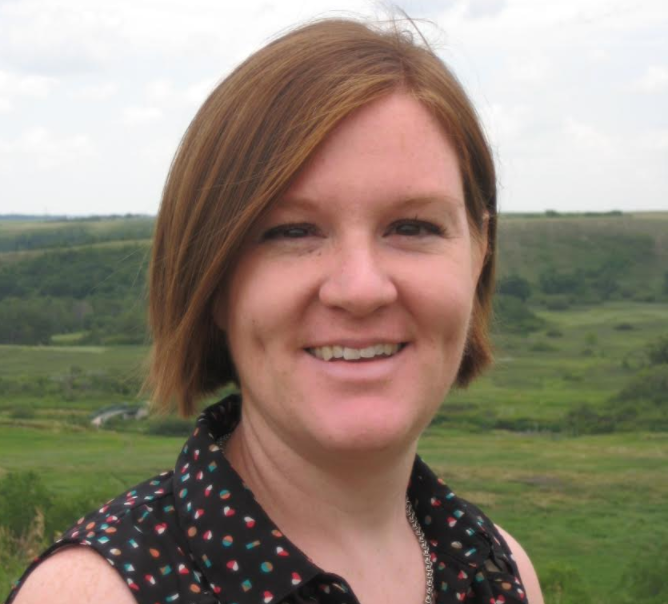
But with thousands of wells allocated to each inspector, Emily Eaton, a geography professor at the University of Regina who has studied the relationship between the oil industry and the government, says that if companies know they’ll probably never get a site visit, then the regulation “is a façade.” Slowly but surely, she explained, the government has been shifting its role from industry watchdog to partner.
“[These regulators] are really thinking about the economic health of the province,” she said. “They’re thinking about returns on investment... The industry should really be regulated by those that have the interests of the environment first."
'I could have died'
Scroll down to continueOil industry worker Trina Hansen breathed in sour gas after failing to properly close a pipeline valve in June 2014. She says her voice has never been the same since. Image courtesy of Global News
Following Bunz’s death in 2014, the Ministry of the Economy launched a new round of oil and gas facility audits. The results were damning.
In one audit, 11 out of 13 facilities failed for infractions that included venting gas with high H2S concentrations. A sweep in August 2014 also found 29 out of 60 facilities were too close to inhabited areas, and 36 out of 60 had to be shut down temporarily for venting emissions.
Of the active sour gas facilities in southeastern Saskatchewan at the time, only 31 per cent — 421 — had “proper emission control systems.” Staff found 161 facilities, noted the report, “that may be in violation of ECON’s sour gas emission control.” But it would take more than a year for the department’s field offices to investigate and verify all the violations, it said.
“Almost every site had improper gas measurement,” the report reads. “Major contamination" was also discovered at two facilities "as a result of spill," it noted, that were not reported to the ministry.
It was in the midst of this dire situation — marked by clear industry compliance failures — that Trina Hansen breathed in an invisible cloud of toxic sour gas. It was June 2014, only a few months after Bunz’s death, and she was clearing gasses and fluids from a pipeline near Carlyle, Sask.
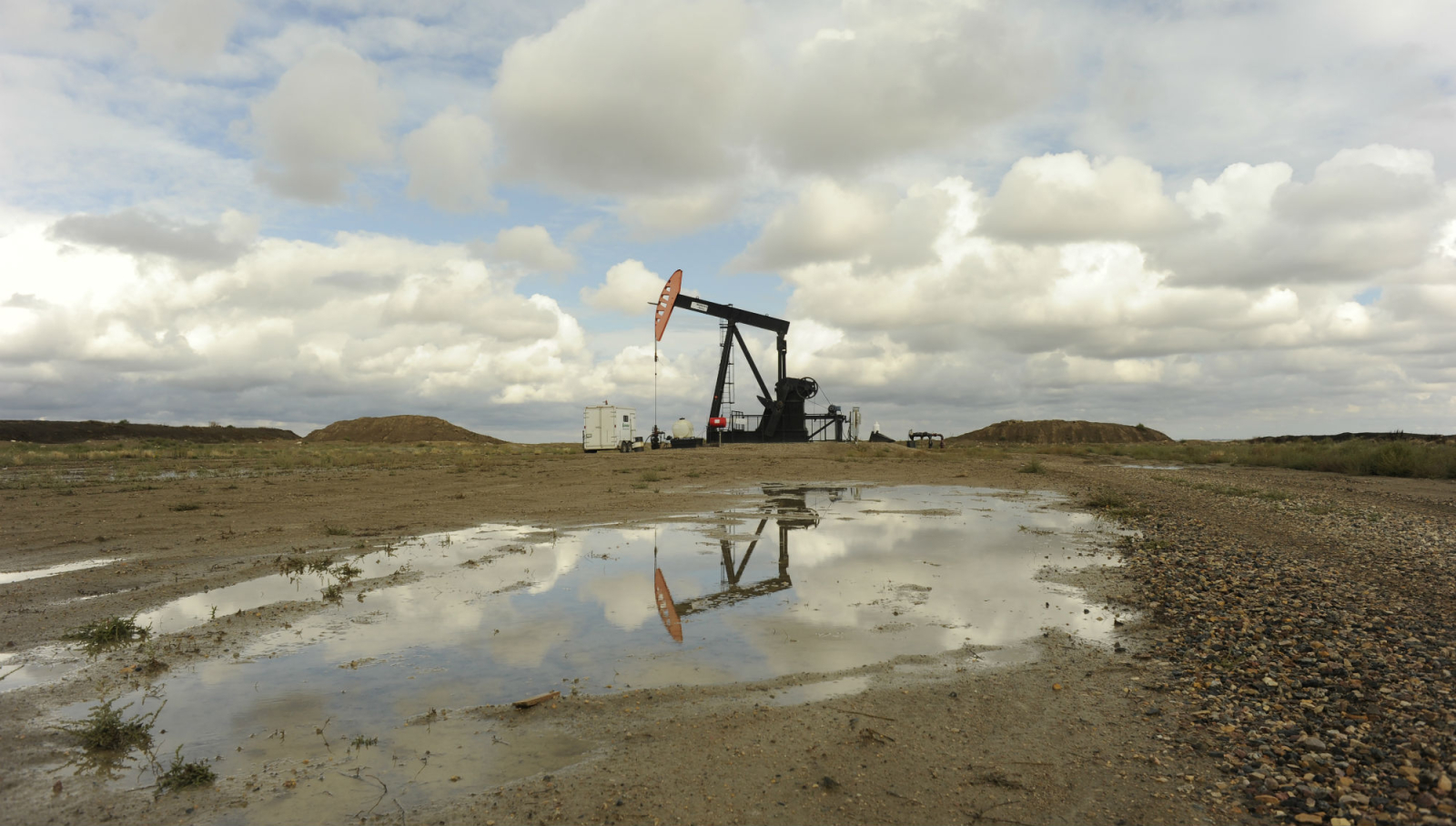
She didn’t close the pipeline valve properly, she says, and when she pulled the hose off, she was hit with H2S. “I could have died” that day, she said in an interview.
“It’s almost like you could feel like a heavy air hit your face. It’s a really weird feeling. Your first reaction is to inhale. When it hits your face, you breathe it in… You don’t think to hold your breath, it happens so fast. I stumbled backwards, I was so shocked.”
Disoriented, Hansen got back in her truck and drove a couple of kilometres until she noticed she was losing her peripheral vision.
“There were white sparkles, iridescent, swirly, super shiny and bright. I jumped out and started feeling nauseous and couldn’t breathe very well. I was trying to catch my breath and dry heaving. My head started pounding.”
Permanent damage
Hansen — a part-time voice actress — suffered debilitating headaches, nausea and sickness, and lost her voice for nearly a month. She still suffers from the aftermath of her encounter today.
“This happened three years ago and I still have a hard time catching my breath if I talk too fast,” she said. “I’m very short of breath. I’ve never in my life felt like that. It was horrible.”
Her voice changed for good as well – far deeper, lower than it was before. “Scratchy” is the word she uses to describe it.
“I do a cartoon on APTN network and they said my voice totally changed. It changed two octaves pretty much. It used to be high and now it cuts out.”
While Hansen takes ownership for her role in the incident, she said she never reported it for fear she would lose her job and never find work again in Saskatchewan’s resource economy. She said a lot of H2S incidents go unreported — she knows of a few personally — and that she was lucky to walk away with her life.
“Nobody wants to say anything,” she explained. “We know it’s bad and dangerous, but no one wants to raise a fuss. And being a woman and trying to prove yourself out there, I never claimed WCB (Workers’ Compensation Board). The economy went down and I have to pay off debt with my trucking money.”
Is H2S still a problem?
Scroll down to continueA flare stick spews tall yellow ribbons of flame in Saskatchewan. Image courtesy of Crude Power, a documentary by the University of Regina School of Journalism premiering on Oct. 4, 2017.
According to the ministry’s written statement, the H2S issue is now under control.
“Air quality standards consistently show that ambient air quality standards are being met at the regional level,” it reads. “The inspection activities by (the ministry) have also confirmed that sour gas management practices of industry operators have improved.”
But the government’s internal inspection database — accessible only to regulators, industry and academics — shows that since January 2016, the ministry’s field office in Estevan, which oversees oil and gas operations in the east of the province, conducted 39 inspections of tank batteries. Twenty-seven failed, 20 because of H2S emissions.
The ministry said it could not comment on those numbers, since it doesn’t know how this investigation calculated them.
Last month, a team of three researchers from Harvard and Northeastern Universities collected data in conjunction with this investigation using the same instruments employed by ministry inspectors to detect emissions invisible to the naked eye.
Four of the 12 sites measured in southeastern Saskatchewan turned up evidence of so-called “fugitive emissions.”
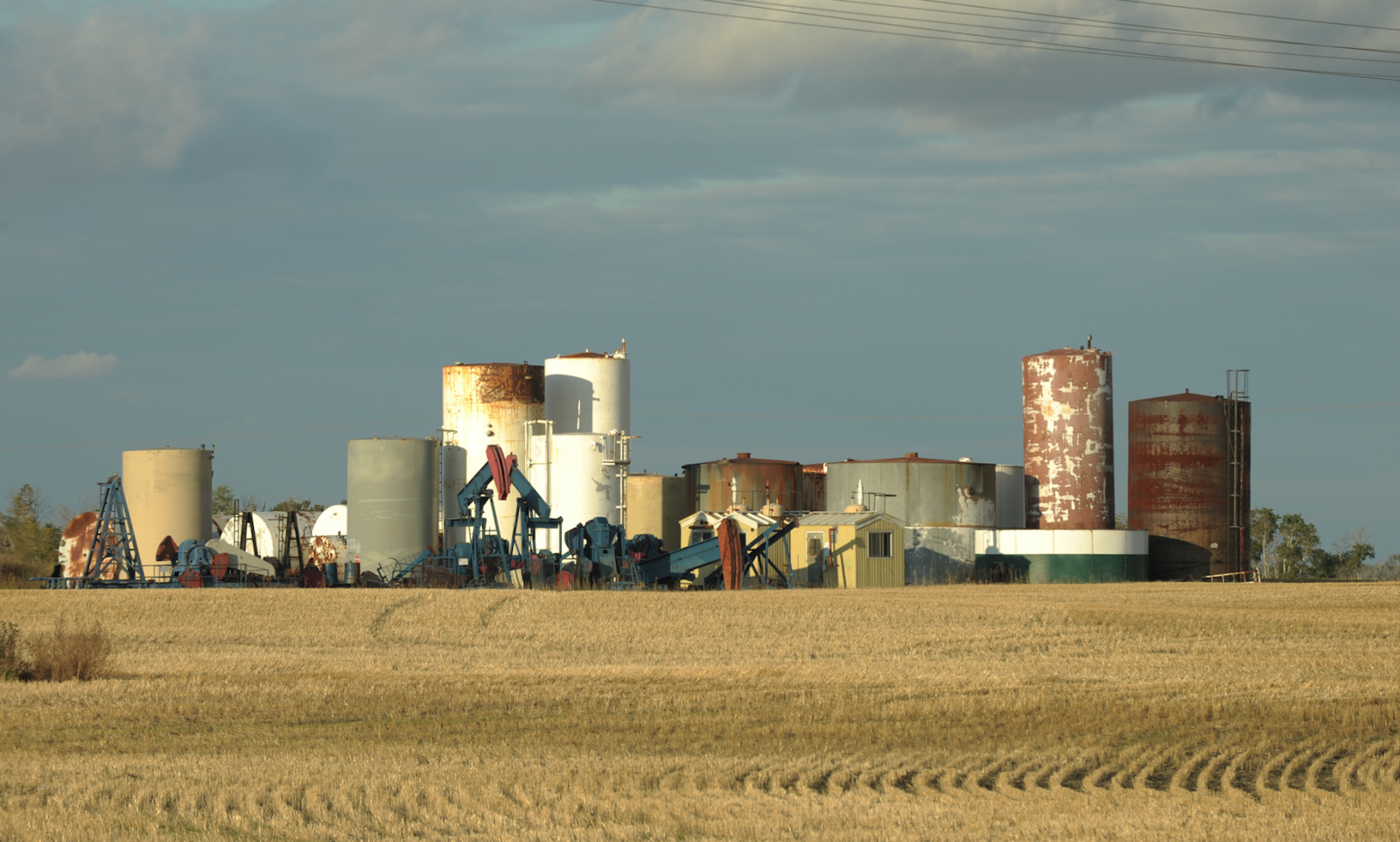
Through interviews with landowners and records in the government database, the joint investigation has found ongoing recent H2S accidents, including at least three separate people who were sickened by clouds of the toxic chemical near their homes in the past year alone. One said they required hospitalization after a near-fatal incident.
Cecilia Englot, who farms and ranches with her husband Lester near Manor, Sask., has not been hospitalized, but has complained to her doctor about illness. She says her family can smell gas from time to time and their cattle have been prone to miscarriage, though proving the link to H2S is difficult.
She’s sick — literally — and tired of it.
“We shouldn’t have to deal with this all the time,” Englot told reporters. “Our health is more important than what these oil wells are.”
Shirley Galloway, who trains oilpatch workers in health and occupational safety through her business, Safe-Tee Management, dismisses government assurances that the H2S problem is fixed.
In January, four years after her relative was made sick by H2S, she and her husband were driving home when they encountered a plume of what she believes was sour gas.
She fell ill and stayed home from work for three days.
“I’ve had arrhythmias, really wicked headaches… I’ve had bouts of nausea. I wake up at night and have heart palpitations,” she said.
Galloway wrote a letter to public officials demanding a response.
There were no consequences or fines as a result, and no official report of an incident anywhere near the Galloway property that day was filed.
That, said Galloway, is just the way it works in Saskatchewan.
“As a person living in the middle of the oil field, you have no protection. The government doesn't care. Your MLA doesn't care. The oil companies don’t care."
Credits
Authors
- Mike De Souza, National Observer
- Elizabeth McSheffrey, National Observer
- Robert Cribb, The Toronto Star
- Patti Sonntag, Michener Fellow
- P.W. Elliott, University of Regina
Data and documentation journalist
- Michael Wrobel, Concordia University
Researchers
- Jennifer Ackerman, University of Regina
- Madina Azizi, University of Regina
- Janelle Blakley, University of Regina
- Cory Coleman, University of Regina
- Josh Diaz, University of Regina
- Brenna Engel, University of Regina
- Matthew Gilmour, Concordia University
- Céline Grimard, University of Regina
- Jared Gottselig, University of Regina
- Lauren Kaljur, University of British Columbia
- Rebbeca Marroquin, University of Regina
- Matthew Parizot, Concordia University
- Katie Doke Sawatzky, University of Regina
- Michaela Solomon, University of Regina
- Kyrsten Stringer, University of Regina
- Caitlin Taylor, University of Regina
- Steph Wechsler, Ryerson University
Faculty Supervisors
- P.W. Elliott, University of Regina
- Trevor Grant, University of Regina
Series Producer
- Patti Sonntag, Michener Fellow based at Concordia University
Institutional Credits
- Concordia University, Department of Journalism
- Ryerson University, School of Journalism
- University of British Columbia, Graduate School of Journalism
- University of Regina, School of Journalism
- Global News
- The Michener Awards Foundation
- Corporate Mapping Project (Canadian Centre for Policy Alternatives, Parkland Institute, University of Victoria, Social Sciences and Humanities Research Council)
This research was supported by the Social Science and Humanities Research Council of Canada.

